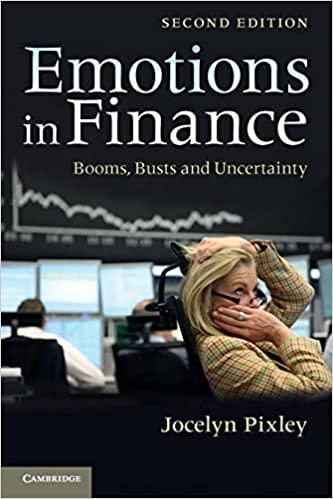Question
You are an analyst at 638 Capital. June Winter, a senior portfolio manager you report to meets with you to discuss interest rates and review
You are an analyst at 638 Capital. June Winter, a senior portfolio manager you report to meets with you to discuss interest rates and review two bond positions in the firms fixed- income portfolio.
Winter begins the meeting by asking you to state your views on the term structure of interest rates. You respond with: Yields are a reflection of expected spot rates and risk premiums. Investors demand risk premiums for holding long-term bonds, and these risk premiums increase with maturity.
Winter then says the "YTM is the single best estimate of expected return because coupons are easily reinvested at the original YTM and YTM can be used on bonds with embedded options with significant risk of default."
Next, Winter asks you to describe features of equilibrium and arbitrage- free term structure models. You respond by making the following statements:
Statement 1 Equilibrium term structure models are factor models that use the observed market prices of a reference set of financial instruments, assumed to be correctly priced, to model the market yield curve.
Statement 2 In contrast, arbitrage- free term structure models seek to describe the dynamics of the term structure by using fundamental economic variables that are assumed to affect interest rates.
Winter then says "based on recent changes in spreads, she is concerned about a perceived increase in the risk and liquidity of 1 month and 3 month Treasury bills. Which spread measure should we use to assess changes in the risk and liquidity of money market securities?
Winter is also worried about the effect of yield volatility on the portfolio. She asks you to identify the economic factors that affect short- term and long- term rate volatility. You respond: Short- term rate volatility is mostly linked to uncertainty regarding monetary policy, whereas long- term rate volatility is mostly linked to uncertainty regarding the real economy and inflation.
Finally, Winter asks you to analyze the interest rate risk in a 5- year and a 20- year bond. Winter requests that the analysis be based on level, slope, and curvature as term structure factors. You presents her with Exhibit 1.
Winter then asks you to perform a few calculations using Exhibit 1.
1: Calculate the expected change in yield on the 20- year bond resulting from a two standard deviation increase in the steepness factor.
2: Calculate the expected change in yield on the five- year bond resulting from a one standard deviation decrease in the level factor and a one standard deviation decreases in the curvature factor.
Winter then tells you that a five-year fixed-for-float SOFR swap is paying 5.00% while the five-year Treasury is yielding 4.3%.
Step by Step Solution
There are 3 Steps involved in it
Step: 1

Get Instant Access to Expert-Tailored Solutions
See step-by-step solutions with expert insights and AI powered tools for academic success
Step: 2

Step: 3

Ace Your Homework with AI
Get the answers you need in no time with our AI-driven, step-by-step assistance
Get Started


